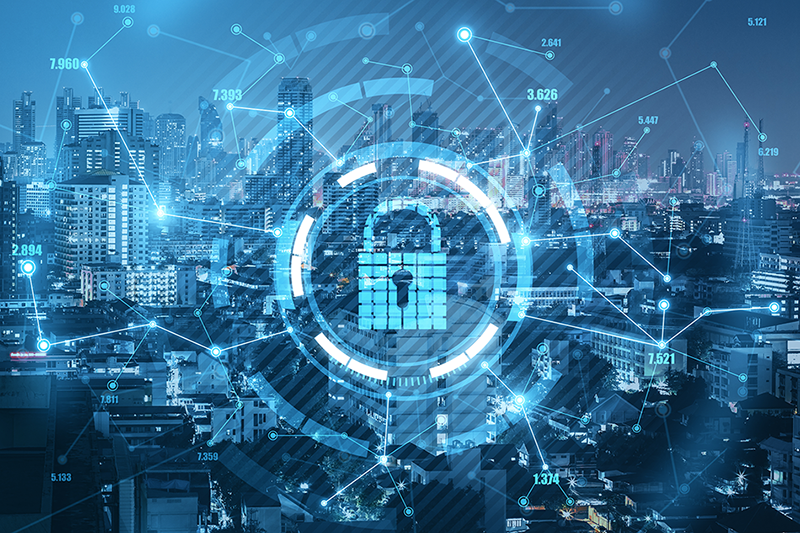Your brand isn’t just a logo or a tagline, it’s your online identity. And just like your physical assets, your brand needs protection. Cybersquatters, those opportunistic individuals who register domain names similar to established brands, are increasingly becoming a headache for businesses of all sizes.
But here’s the good news: you don’t have to wait until your brand is under attack to take action. Keep reading to learn how GlobalBlock can help you stay ahead of threats and protect your online presence before issues arise.
The Growing Threat of Cybersquatting
We’ve all been there: typing a familiar website name only to land on something completely different, often a sketchy page filled with ads or, worse, a convincing fake design to steal your information. That’s cybersquatting in action, and it’s costing businesses billions annually in lost traffic, reputational damage, and legal fees.
Recent statistics show that for every legitimate domain a company owns, there are approximately 30 potential variations that could be used maliciously. These include common misspellings, different domain extensions (.net instead of .com), and homoglyph attacks (using similar-looking characters from different international alphabets).
Real-World Impacts
Even celebrities and major brands aren’t immune. This past January 2025, Snoop Dogg faced a cybersquatting issue when an opportunistic individual registered snoopdoggbush.com (‘Bush’ being the name of his latest album). Snoop was forced to file a UDRP (Uniform Domain Name Dispute Resolution Policy) complaint to regain control of the domain. While he ultimately won the case and reclaimed the domain in March 2025, the cybersquatter had already used the domain in bad faith for months, potentially confusing fans and damaging the album’s promotional efforts.

Similarly, Madonna won a landmark case in 2000 against a cybersquatter who had registered Madonna.com and was using it to display pornographic content. The World Intellectual Property Organization (WIPO) ruled in her favour, highlighting the damage such domain hijacking can cause to a personal brand.
Cybersquatting can affect anyone – from individual celebrities to major corporations, creating significant financial and reputational challenges while forcing victims to spend valuable time and resources fighting legal battles instead of focusing on their core business or creative endeavours.
The Reactive Approach Is Costly
Traditionally, brands have taken a reactive approach to cybersquatting:
- Potentially purchase the domain at an inflated price.
- Discover someone is using your brand in a domain name.
- File UDRP (Uniform Domain-Name Dispute-Resolution Policy) complaints, which can range from $1,500 to $5,000.
- Engage in expensive litigation.
- Potentially purchase the domain at an inflated price.
This process is time-consuming, expensive, and worst of all—it happens after the damage has begun. Legal battles can take months, during which your customers remain exposed to potential fraud.

The Proactive Defence: Domain Blocking
What if you could prevent cybersquatters from ever getting their hands on variations of your domain name in the first place? That’s where domain blocking comes in: a strategy that’s becoming the gold standard for forward-thinking brand protection officers.
Domain blocking is exactly what it sounds like: proactively reserving domain names similar to yours, not to use them, but to prevent others from registering them. Think of it as creating a protective moat around your digital castle.
Services like GlobalBlock have revolutionized this approach by making it simple and cost-effective. Rather than requiring you to register and manage hundreds of domains individually (a logistical nightmare), domain blocking lets you protect multiple variations with a fraction of the effort and cost.
When a domain is blocked:
- It’s reserved at the registry level, meaning the name cannot be registered by anyone.
- The domain can’t be used for websites, email or any other purpose.
- No requirements to maintain registration and renewals each year and continue paying registration fees individually. It can cost significantly less than registering each domain separately.
Identifying Your Vulnerabilities
The first step in effective domain blocking is understanding exactly what needs protection. Most businesses are shocked to discover just how many vulnerable domains exist around their brand.
Consider these common variations that cybersquatters target:
- Typosquatting: Misspelled versions of your domain (amazno.com instead of amazon.com)
- Common Extensions: Your brand name across different TLDs (.net, .org, .co, etc.)
- Homoglyph Attacks: Using visually similar characters (using the Cyrillic “о” instead of “o”)
- Addition/Subtraction: Adding or removing letters (googgle.com or gogle.com)
- Hyphenation: Adding hyphens between words (face-book.com)
- Word Swapping: Rearranging words in multi-word domains
The more successful your brand becomes, the more attractive these variations are to potential cybersquatters.
The Benefits Beyond Security
While the primary purpose of domain blocking is security, the benefits extend further:

Cost Efficiency: Blocking domains is significantly less expensive than dealing with the aftermath of cybersquatting or registering hundreds of domains individually.
Brand Integrity: Ensures customers always reach your authentic content, maintaining trust and reputation.
Reduced Legal Headaches: Prevents disputes before they happen rather than resolving them after.
Marketing Clarity: When customers search for you, they find you—not imposters or competitors capitalizing on your brand equity.
Taking the First Step: The challenge for many businesses is knowing where to start. With potentially hundreds of domain variations to consider, the task can seem overwhelming.
This is where personal account management becomes invaluable. By connecting with our team, we are able to analyze your current domain and online brand presence, and provide you with a custom report identifies the most critical domains you should consider blocking.
Assessing Your Risk
Different businesses face different levels of risk when it comes to cybersquatting:
- High-traffic websites are prime targets due to the value of intercepting even a small percentage of their traffic
- E-commerce businesses face additional risks as fake sites can directly steal customers and revenue
- Financial services are particularly vulnerable as cybersquatters can use similar domains for sophisticated phishing attacks
- Brands planning marketing campaigns should secure relevant domains before publicizing new slogans or product names
Taking Action Today
The best time to protect your domains was when you first registered your brand. The second-best time is now.
Getting a clear picture of your domain vulnerabilities is the essential first step. Request your free custom domain assessment from our team today.
By taking a proactive approach to domain security, you’re not just protecting your brand from existing threats; you’re ensuring peace of mind for the future growth of your digital presence.
You can access more information about GlobalBlock here.

Leona Chen-Birkner is the Senior Business Development Manager at Brand Safety Alliance, the company behind GlobalBlock — an innovative solution that delivers unmatched online brand protection across 600+ domain extensions in a single transaction. With nearly two decades of extensive experience in the domain name industry, Leona works closely with IP professionals, brand experts and domain registrars worldwide. Leona has a strong background working in technology organizations in both North America and Asia. In addition to English, she speaks Cantonese, Mandarin, and Japanese.




